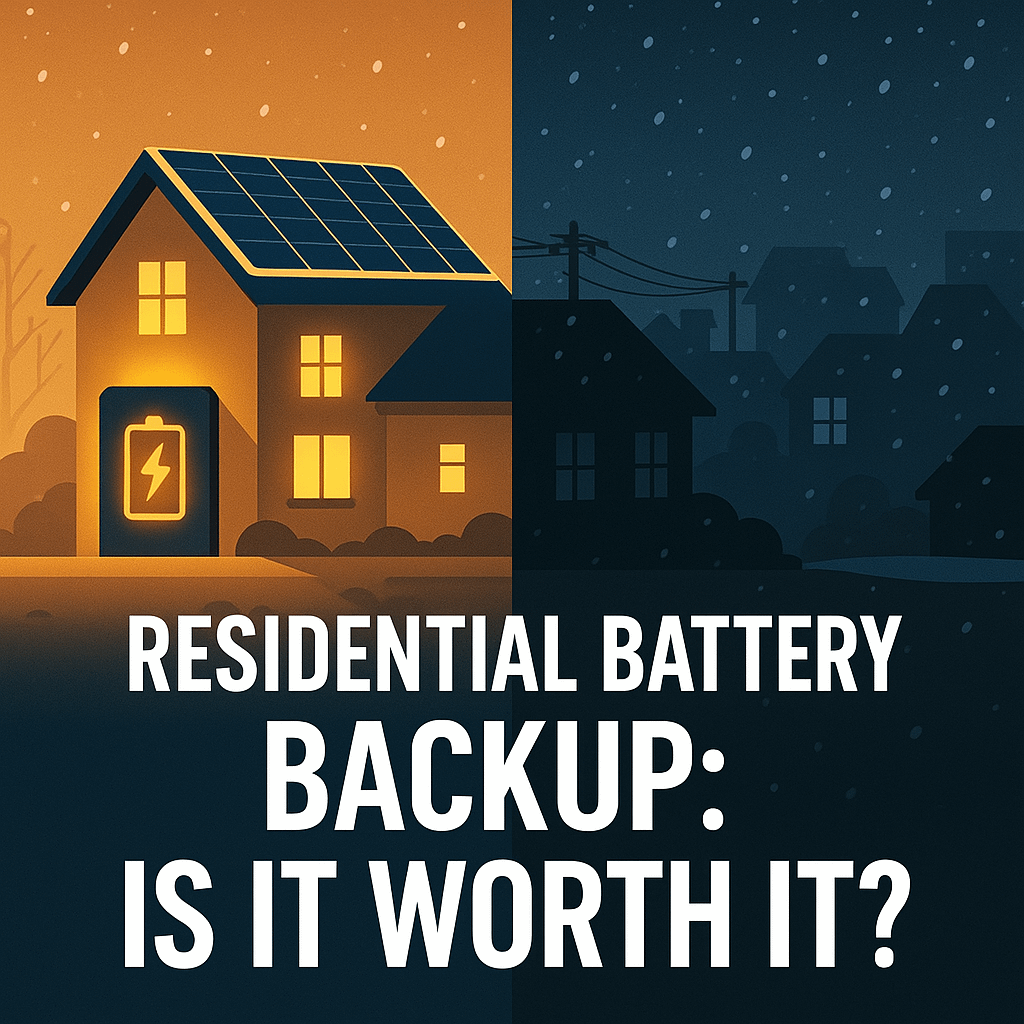In this edition we’re going to give you all the latest on solar integrated roofs. Are they ready for prime time, or do they just look nice? We’ll tell you all about Tesla’s Solar Roof and GAF Energy’s Timberline Solar Shingles. We’ll break them down side by side and also compare integrated solar to standard roof mounted solar. One important question can help you decide if integrated solar is right for you…
How Old is Your Roof?

This is the first place to start. If you just had a new roof put on your home, it would be wasteful to tear it off to add a solar roof. Mount a standard PV array on your new roof and it will last you even longer.
Roof integrated solar comes with a big price tag. However, if you are in need of a new roof that roof is going to set you back north of ten grand anyway. That means you basically get a five figure discount on your new solar installation before you factor in a single dollar of the five figure government incentives you’ll get back as well.
Once you factor in the current Federal rebate of 26% and any other local or state incentives, the price tag of your solar installation comes down quite a bit. Both roof mounted and roof integrated solar qualify.
So, if it’s about time to replace your roof anyways, or if you’re building a new house, a roof that keeps you protected from the elements and generates power might be a smart option.
Speaking of options…
Who Makes roof integrated solar products and what do they look like?
Tesla
Source: Bloomberg Quicktake: Originals
First up, let’s talk about the electric vehicle (EV) industry titan, Tesla and their Solar Roof. Sure is pretty isn’t it? And to me, that’s really the point with a Tesla roof. It’s beautiful, it’s flashy, it’s also functional, but… it’s expensive.
Tesla EVs aren’t the cheapest way to commute either. But if you want amazing performance and all the high-end touches, Tesla has you covered in spades. If you just want to drive an electric vehicle there are far cheaper options. If you’re driving a Tesla, it’s about more than EV technology. Your horn plays ”La Cucaracha”…
Does the Whole Roof Produce Solar?
No. Tesla Solar Roof is made up of “active” and “inactive” tiles. And you guessed it, the inactive tiles don’t produce electricity. They do, however, match their beautiful, active counterparts. The distribution of active tiles will determine how much power you generate.
All active tiles will generate power. That said, tiles in shaded areas or facing away from the sun will generate less. So each tile will be performing at a different level, with the sunniest tiles approaching the tile’s rated output power.
Tesla Solar Roof Specs
A single solar roof tile is 15” by 45”, or, a little over one foot by a little under four feet Or, about the dimensions of a typical six year old child… tall and wide of course. The tiles are considerably skinnier. Probably uncoincidentally, the tiles are also similar in size to a standard roof shingle, which is 12” by 36”. That means, with a 2,000 square foot roof it’ll take you a little less than 450 solar tiles to cover your roof.
Power Output
Each tile is capable of putting out 71.67 Watts under standard test conditions (STC), according to electrek.
So taking the math a bit further, your new roughly 2,000 square foot roof with 450 tiles putting out 71.67 Watts… 450 tiles * 71.67 Watts = 32,251 Watts… if each tile is active. But as we discussed, every tile won’t be.
Now, even if you did install 450 active tiles, is your system ever going to produce 32kW… sorry, no. The output rating of the tiles are calculated under standard test conditions or, STC, which is a solar irradiance of 1000 watts per square meter at 77 degrees F. So basically, this is what you get in a lab simulation under optimal conditions.
Unless you happen to have a completely flat roof, aimed perfectly perpendicular to the sun in a pleasant climate, your’e going to fall short. And throughout the day you will fall considerably shorter as you get closer to dawn and dusk.
Batteries and Inverter
Paired with the Tesla Powerwall (as each solar product will) your shiney new roof will power your house, rain or shine. Yes, it will even power your entire home when the grid crashes and shuts your neighbor’s lights off.
The Powerwall’s integrated inverter comes in 3.8kW and 7.6kW models. See our inverter sizing article to determine your needs. The Powerwall has 13.5 kWh of storage capacity, but can be combined with additional units to add even more, if needed.
Durability
You may see the beautiful Solar Roof and wonder how durable it is. Is it smart to expose something so pretty to the elements? What about hail?
Not to worry. The Tesla roof is tough. How tough? Well, see for yourself…
Source: Plugin Report
If you want to see that in specifications:
Wind Rating: ASTM D3161 Class F
Fire Rating: Class A (highest rating)
Hail Rating: ANSI FM 4473 Class 3
We can see why Tesla is offering a 25 year warranty on these tiles.
Price Point
The exact cost of a Tesla Solar Roof depends on how much solar you want and the size and geometry of your roof. The larger and more complex your roof is, the more expensive it will be to install a solar roof. Expect a low entry point to be around $30k with $50k+ not an unusual cost for a Tesla Solar Roof when all is accounted for.
GAF Timberline Solar Shingles
Not as pretty as a Solar Roof, but a pretty cool product in its own right. With the slogan, “Energy From Every Roof”, the Timberline Solar™ roofing system is brought to you by an actual roofing company. And not just any roofing company, it’s the largest roofing company in North America, GAF Roofing.
Advantages of Timberline Shingles
One advantage of this product is it was made by a roofing company and was designed with the roofer in mind. The shingles install very similar to how a regular shingle would be installed. A good roofer will require little training. The ability to tap into an existing pool of workers that are able to install the product can help keep installation costs down.
The solar shingles are incredibly lightweight. A typical solar panel weighs about 40 pounds and is over twice the size of a Timberline shingle. A Timberline shingle is a measly 10.1 pounds. If you’re building in a remote location, this compact size and light-weight could be a significant advantage.
The shingles are nailed into your roof similar to a standard asphalt shingle. This tried and true attachment method allows Timberline shingles to withstand wind speeds up to 130 mph.
Batteries and Inverter
Timberline Solar shingles don’t include a battery or inverter. This is just as well, in my opinion. That means you have the freedom to decide what is right for your situation and shop around.
Tesla Solar Roof vs Timberline Solar
Each of these products are pretty amazing. If it’s time to replace your roof, a solar integrated roofing product could be a great investment. Tesla’s solar roof comes in different styles, each of which are stunning. The Timberline solar product isn’t going to have the same curb appeal as its fancy Tesla counterpart, but it does have an appealing, subtle look.
Both products are super durable and can be walked on and hailed on and will stand up to high winds. I’m not sure if the Timberline Solar shingles will truly come out to be half the cost of a Tesla Solar Roof, but it will certainly be a less expensive product.
To me they are so similar in function that the difference comes down to style. Do you want to shell out the extra cash for a flashy roof, or would you prefer to be more frugal?
How do These Products Compare to Traditional Rooftop Solar?
In order to secure standard rooftop solar racking to your roof, you need to drill giant bolts through it. This is because the gap between the solar panels and your roof make the panels more vulnerable to lift from high winds. On the other hand, that gap allows traditional panels to cool which improves panel efficiency.
Each of these products have their advantages. And when you combine the dwindling price of solar panels with the lucrative tax incentives that are available, installing solar becomes less of an environmental statement and more about saving money.
Final Thought
If your roof is in good shape, it doesn’t make much economic sense to install solar integrated roofing. In that case, you should look into standard roof mounted solar. But if you are in need of a new roof, it makes a lot of sense to consider the new solar integrated products. They’re easy on the eye, offer 25 year warranties and kill your utility bill. If you want to go high end, get Tesla’s Solar Roof, if you want a more affordable option, Timberline Solar is also a great choice. And no matter what you choose, definitely take advantage of tax incentives that are available now!
Tell Us Your Plans!
Drop a comment below! Let us know what you think. Do you have experience with these products? What are your solar plans?
Are You Ready For Solar?
If you’re ready to start generating power on your rooftop, we’re here to help you find the best deals. Evergreen Off-Grid has found the easiest way for you to get the best deals in your area, and we’ve partnered with EnergySage to bring them to you.
EnergySage is the largest, most trusted solar education resource in the country. They serve as a consumer advocate to help energy customers learn about and comparison-shop for their rooftop solar, battery and community solar options.
Simply sign up (no phone calls required!) and receive multiple quotes to compare in one place.
EnergySage’s competitive marketplace is free to use and helps deliver up to 20% savings compared to the broader market. Additionally, their team of unbiased expert Solar Advisors can help you review your proposals and answer any questions you have along the way. So head over to the Solar Marketplace now and find the best solar solution for you!
Thank You!
Thanks for reading! Please contact us and let us know what you want to read about: info@evergreenoffgrid.com





